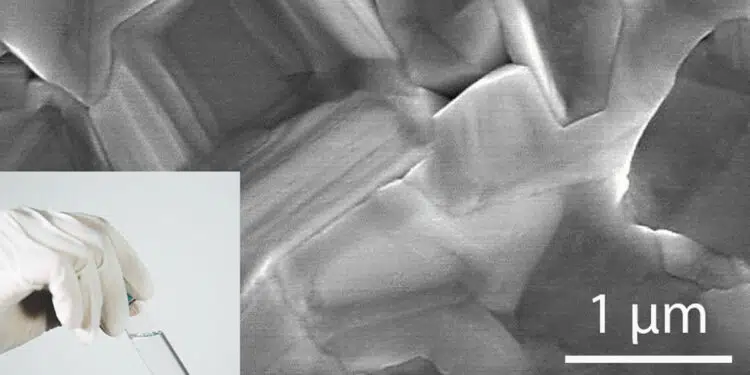Electroninks, the leader in particle-free metal inks and advanced conductive materials, announced the confirmation of an enhanced particle-free silver ink product with aerosol jet printing compatibility for ultra-fine line printing requirements.
As a recognized industry leader of metal complex particle-free conductive inks, Electroninks developed an enhanced particle-free silver ink designed for fine-line, low temperature curing with aerosol jet printing that delivers a best-in-class combination of print resolution, electrical performance, and process temperature.
The new ink product has broad impacts as aerosolized printing heads are compact, can be easily integrated into production lines, or placed on robotic arms for multi-axis additive manufacturing of conductive interconnects and circuits. This manufacturing technique is ideal for highly precise semiconductor packaging, aerospace, display, and biomedical applications. The use of the particle-free ink with aerosol jet printing makes it possible for manufacturers to reduce the size, power and weight of devices, making it ideal for interconnects and metallization in mobile and wearable products, foldable displays, biomedical devices and sensors, and conformal 3D parts.
“At Electroninks, we are committed to providing our customers with the highest performing products and solutions to meet the demands of their emerging manufacturing technologies and products,” said Electroninks co-founder and President, Melbs LeMieux. “Our new enhanced particle-free silver ink product is compatible with aerosol jet printing technology and allows our partners and commercial customers to meet difficult specifications.”
Aerosol jet printing is an additive manufacturing process that prints commercially available conductive, dielectric, semiconductor, and biologic inks onto a variety of 2D or 3D plastic, ceramic, and metallic substrates. Electroninks particle-free inks provide versatile, low-cost, domestically produced, all-in-one additive manufacturing solutions.
Electroninks’ novel particle-free ink formulation and capabilities interested In-Q-Tel, Inc., the strategic investor to the U.S. intelligence community, which joined with Electroninks as an additional strategic partner and investor. The partnership with In-Q-Tel will allow Electroninks to deliver its products at scale to its government partners in national security as well as for broader commercial usage.
“In-Q-Tel understands the value that Electroninks’ technology and team know-how can provide to the manufacturing of interconnects,” said Victoria Chernow, Ph.D., Technology Architect, In-Q-Tel. “We believe our strategic investment in Electroninks will contribute to our partners’ mission needs.”
Electroninks is delivering a more cost-effective and efficient use of many noble metals through its particle-free ink formulations, including gold, platinum, nickel, and copper. Its particle-free silver ink delivers higher conductivity, flexibility and cost-effectiveness making them ideal for today’s smaller, lighter, more highly functional electronic products.
The aerosol jet printing compatible particle-free silver ink is capable of being printed at <15um resolution, with up to 10um height, up to 3x bulk conductivity of silver, while being cured at no higher than 120C, while maintaining certain manufacturing and throughput specifications.
Development Team Quotes:
“The newly developed silver ink combines best-in-class electrical performance with fine feature printing,” said Garret McKerricher, Senior Scientist, Electroninks. “The ink is capable of ultrasonic aerosol jet printing and demonstrates fine feature printing at less than 20um resolution with high aspect ratios.”
“The new silver ink provides good resistivity at a low curing temperature, and has high volume output, ” said Yuan Gu, Senior Scientist, Electroninks. “Combined with room temperature printability, the ink is ideal for 3D surfaces printing on wrap-around and other flexible surfaces.”






























